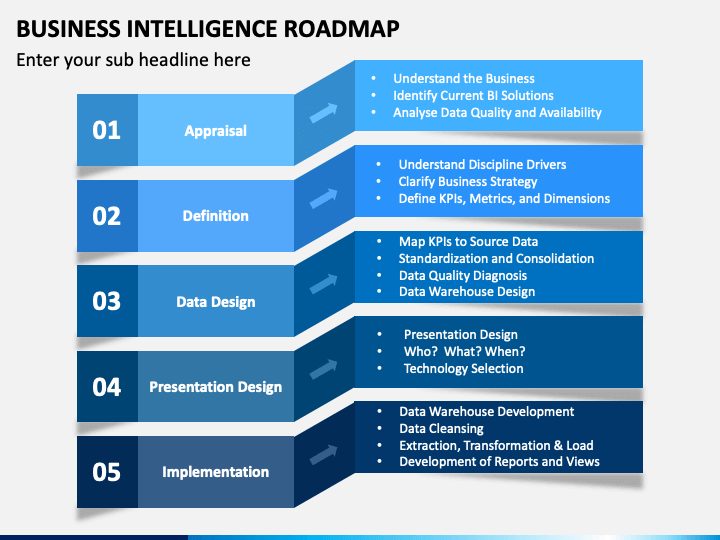
Governments the world over are looking to transform the way they deliver services to citizens, improving access to services, simplifying processes and reducing costs. Public Sector Digital Transformation Strategy Roadmap Improving customer experience, increasing efficiency and preempting competition from disruptive digital technologies are all objectives driving organizations’ pursuit of digital transformation. Manufacturing Industry Digital Transformation Strategy Roadmap Unfortunately, it’s harder than ever to establish a data governance capability. Quality data is critical to the development of the business world’s most forward-thinking capabilities, such as data analytics, machine learning and artificial intelligence. Strategy Roadmap Examples Data Governance and Data Management Strategy Roadmap

The changes identified form the outcomes or initiatives which appear on your strategy roadmap. This takes a holistic view of the organization to ensure that you have good coverage and understanding of the areas of change.Ĭapability-based planning will help you understand what capabilities exist what capabilities are required in the future to meet the strategic vision what changes are required and the priority of these changes. One method of formulating and substantiating a good strategy roadmap is capability-based planning. We share our own six-step method here.Įssentially, the translation of a strategy to a strategy roadmap must be done in a structured and logical manner, ensuring there is clear linkage or substantiation of the strategy roadmap outcomes back to the strategic vision or intent. It can be a complex job, so the method you apply must be sound. To recap: a good strategy roadmap articulates what must be changed, why it must be changed, and in what sequence the change should be carried out. How is a Strategy Roadmap Created? Establish a Method Have we missed anything? How do we really know that this list of initiatives will deliver our strategy? Later, most of these organizations start to question this method. The workshop is usually facilitated with the key question being: ‘What initiatives or activities do we need to execute?’ From there, the people in the room simply dream up a list. Often, an execution plan is derived by gathering groups of people into a workshop, handing out some sticky notes and start spawning a list of initiatives. Many organizations jump straight from their strategy into execution or implementation planning. Often, an execution plan is represented in a Gantt chart with a specific timeframe, start and end dates, milestones, and resource allocation. It describes what the organization must change, and why the changes are required, in order to achieve the strategic vision.Īn execution plan describes how the organization will deliver the outcomes described in the strategy roadmap. An execution plan describes the how.Ī strategy roadmap is not a visual Gantt chart of activities with start dates and end dates.

What’s the Difference between a Strategy Roadmap and a Plan?Ī strategy roadmap describes the what and the why. Importantly, the outcomes on the strategy roadmap are substantiated by a clear understanding of which of the organization’s capabilities, gaps and priorities must be addressed. It visualizes the key outcomes that must be delivered over a particular time horizon in order to achieve the organization’s strategic vision.

How do you successfully convert your strategy into an execution plan?Ī strategy roadmap is a bridge (or link) between strategy and execution.

Now you need to create an implementation plan to execute this strategy – but this is where many organizations hit a road block. So, you’ve worked hard and developed a strategy that articulates your organization’s purpose, values, vision and goals.


 0 kommentar(er)
0 kommentar(er)
